Seniors health monitoring wristband

What was the client’s initial situation? What challenges were they facing?
The client was working on a wearable device for seniors that combined several sensors: an IMU (with activity recognition based on decision trees), a heart rate monitor, GPS, and a modem supporting SMS and voice calls via microphone and speaker.
The system used BLE for communication and was designed to connect with a backend. Early firmware was built on FreeRTOS and ran on a simplified prototype board without full feature support.
At that point, the client didn’t have a stable development setup, lacked testing tools and automation, and had limited access to embedded engineers – especially those familiar with Zephyr – while being under pressure to deliver a working prototype for stakeholder demos.
How was the client handling the problem before we stepped in?
GoodByte joined the project at a key architectural decision point – the client was transitioning to a new processor and RTOS (nRF with Zephyr). Firmware development was previously done locally, without a consistent environment, automation, or a test system.
Full system bring-up required manual configuration and troubleshooting. While the client had full control over the product vision, they needed acceleration and structure in both software development and hardware integration.
How did GoodByte solve the problem?
How did the changes help the customer?
Thanks to our collaboration, the client received a flexible, extensible firmware platform and a prototype ready for live demonstration. Fast testing and firmware updates (including rollback) significantly accelerated development cycles. The new architecture made it easy to scale the system and toggle features per hardware build.
Our support extended beyond software — we helped with hardware bring-up and communication with partners, improving the overall technical quality and maturity of the solution.


